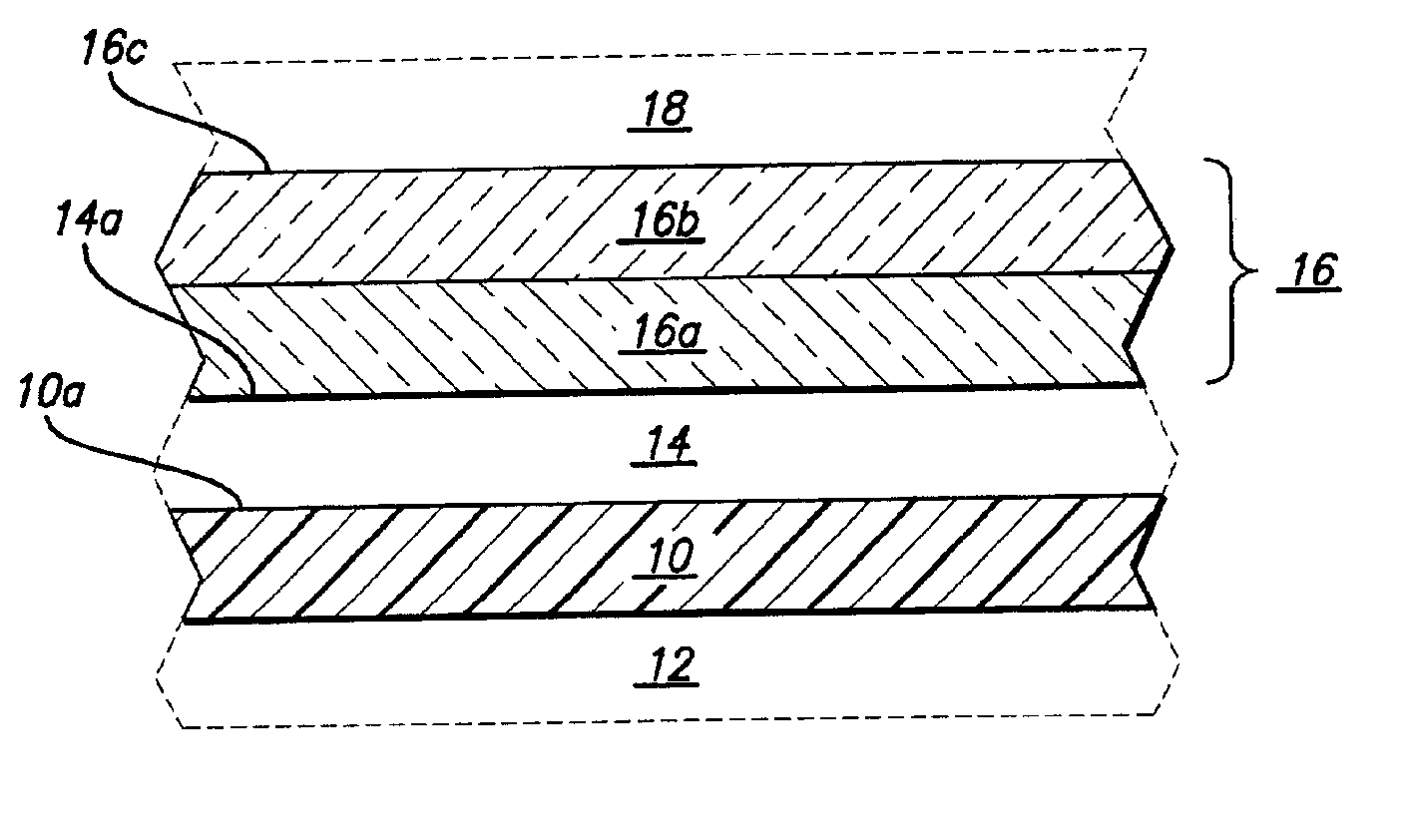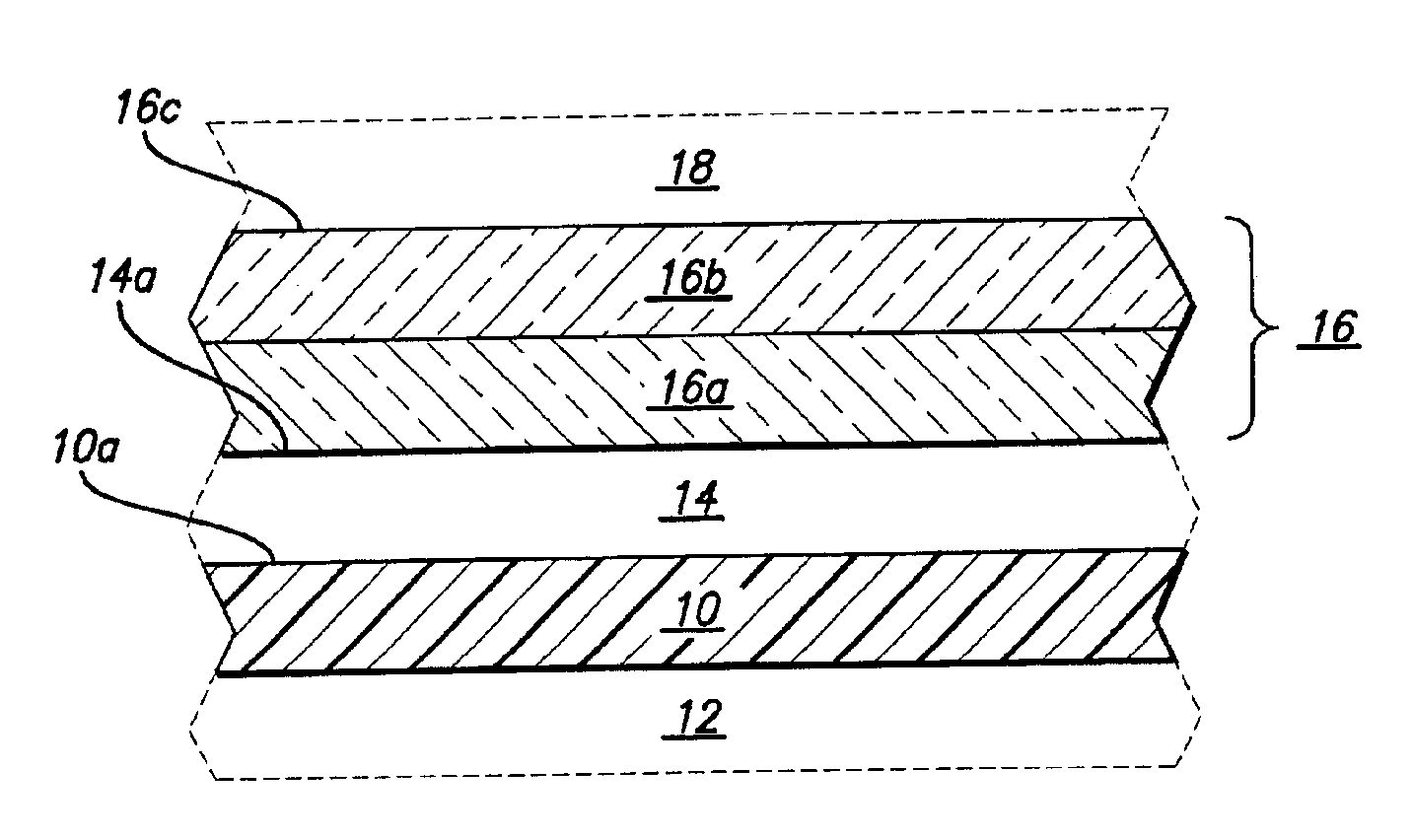Porous inkjet receiver layer with a binder gradient
a binder gradient and inkjet receiver technology, applied in the field of printing media, can solve the problems of inability to distinguish between layers, inability to achieve uniform coatings, so as to avoid cracking and film formation problems, good adhesion to the substrate, and good inkjet absorption characteristics
- Summary
- Abstract
- Description
- Claims
- Application Information
AI Technical Summary
Benefits of technology
Problems solved by technology
Method used
Image
Examples
examples 1-8
A series of recording sheets were prepared as follows: a substrate comprising a resin-coated photobase material (Examples 1-4) or a MELINEX film (a polyester terephthalate) was coated with an inkjet receiver comprising aluminum oxide as the pigment (Sasol HP / 14) and polyvinyl alcohol as the binder (Mowiol 5698). A gradient was created in each instance (except for Example 1, which had no gradient), wherein the concentration of binder was greater at the substrate and decreased away from the substrate. Two layers were used to form the gradient in the inkjet receiver. The inkjet receivers formed on the film were further coated with a topcoat containing silica. Specifically, Example 5 and 6 were coated with 1.0 g / m2 Cartacoat 302C (Clariant), which has a mean particle size of 25 nm, while Example 7 and 8 were coated with 1.0 g / m2 Cartacoat 303C (Clariant), which has a mean particle size of 50 nm.
The compositions are listed in Table I below:
TABLE ICompositions and Gradient in Two-Layer In...
PUM
| Property | Measurement | Unit |
|---|---|---|
| thickness | aaaaa | aaaaa |
| thickness | aaaaa | aaaaa |
| atomic number | aaaaa | aaaaa |
Abstract
Description
Claims
Application Information
 Login to View More
Login to View More - R&D
- Intellectual Property
- Life Sciences
- Materials
- Tech Scout
- Unparalleled Data Quality
- Higher Quality Content
- 60% Fewer Hallucinations
Browse by: Latest US Patents, China's latest patents, Technical Efficacy Thesaurus, Application Domain, Technology Topic, Popular Technical Reports.
© 2025 PatSnap. All rights reserved.Legal|Privacy policy|Modern Slavery Act Transparency Statement|Sitemap|About US| Contact US: help@patsnap.com


